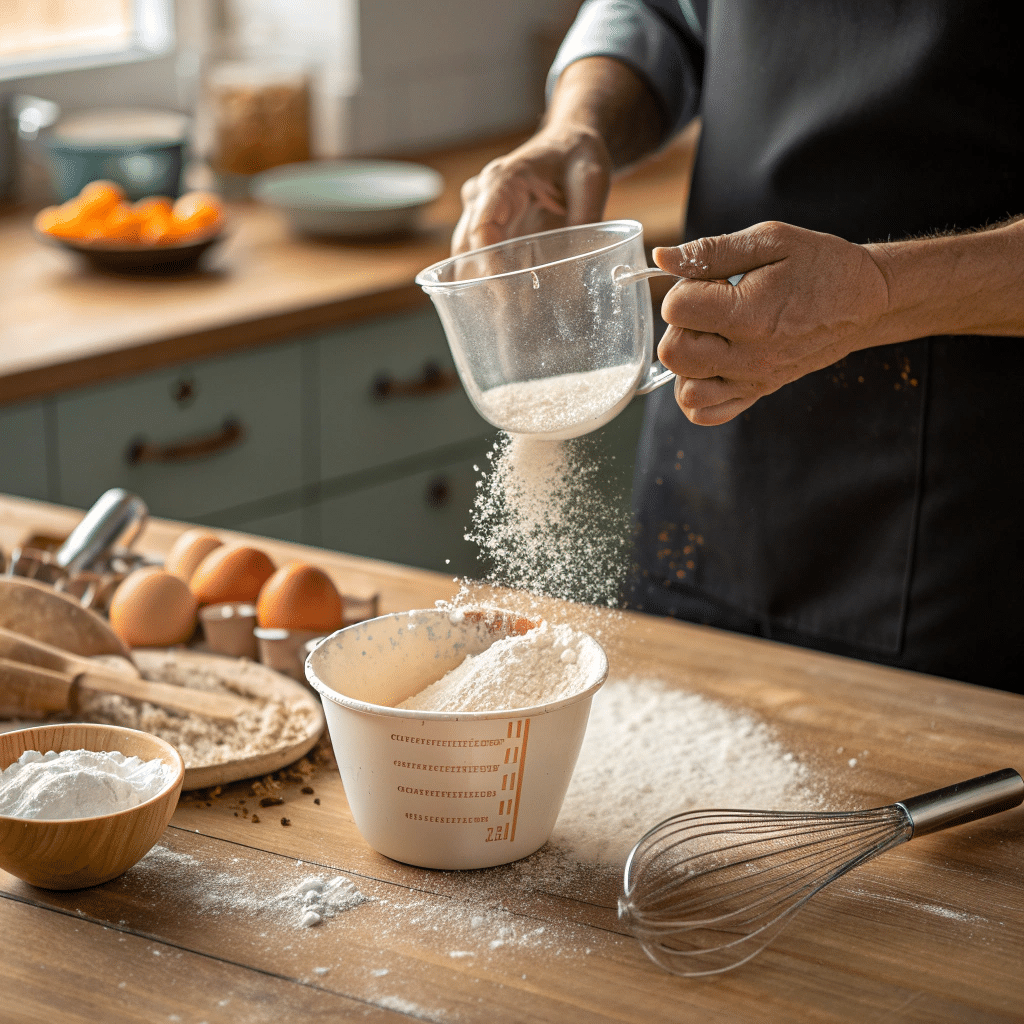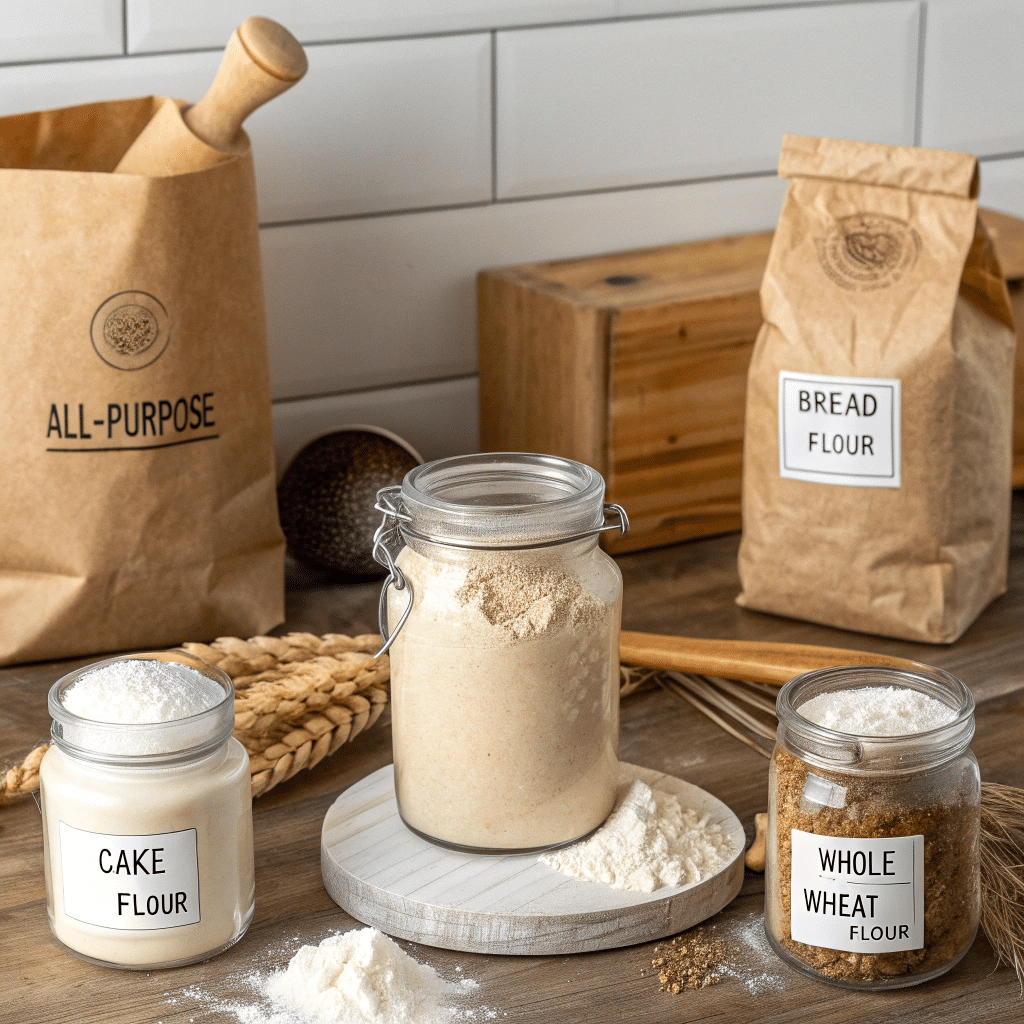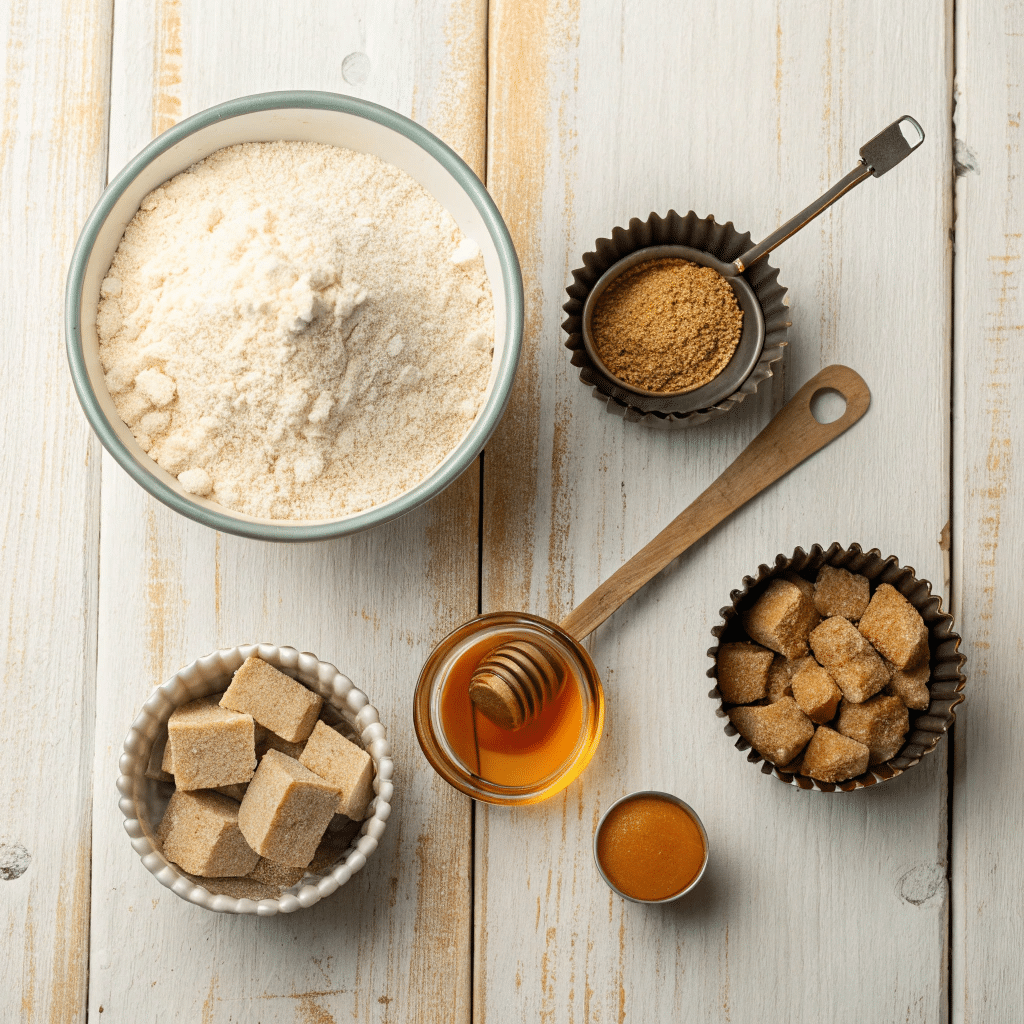Baking is one of those hobbies where precision matters just as much as passion. You can eyeball your favorite chili recipe and it’ll still turn out fine. But swap a heavy scoop of flour for a lighter one, and suddenly your cookies are hockey pucks. That’s why learning how to measure flour correctly is one of the best favors you can do for your future cakes, cookies, and loaves.
Why Measuring Flour Correctly Matters

Flour is like the backbone of baked goods. Too much, and your muffins are dense and dry. Too little, and your bread collapses like a poorly pitched tent. A single cup of all-purpose flour can weigh anywhere between 110 grams and 150 grams, depending on how it’s scooped. That’s a massive difference for something as delicate as a sponge cake.
Baking isn’t just an art—it’s part science experiment. And flour is your main ingredient. If your measurements are off, even the best recipe can’t save you.
The Right Tools: Dry Measuring Cups vs. Liquid Measuring Cups
First things first: use the right cup. Dry measuring cups are meant for ingredients like flour, sugar, or cocoa powder. They let you level the top cleanly. Liquid measuring cups are better for, well, liquids. Pour flour into a glass measuring cup, and you’ll almost always pack in too much.
So, rule number one: invest in a solid set of dry measuring cups. They’re inexpensive, and they’ll last you through countless batches of cookies.
The Spoon and Level Method
If you’ve ever seen a baker gently spoon flour into a cup and wondered, “Why not just scoop?”—here’s why. Scooping directly from the bag compresses the flour. You’ll end up with way more than the recipe intended.
Here’s the spoon-and-level method step by step:
- Fluff the flour in the container with a spoon or whisk.
- Spoon it into your dry measuring cup. Don’t shake or tap the cup.
- Use a flat edge (like a butter knife) to sweep off the excess.
It takes an extra 30 seconds, but it’s the difference between chewy brownies and ones that taste like cardboard.
Measuring Flour by Weight
Now, if you want to take out all the guesswork, grab a digital kitchen scale. Measuring flour by weight is the gold standard. Most recipes that list grams instead of cups are aiming for consistency.
A typical cup of all-purpose flour weighs 120 grams. But as we just mentioned, scooping can pack in up to 30 grams extra. That’s like throwing an extra quarter cup into the bowl without realizing it.
Scales also make baking conversions easier. Switching between cups, ounces, and grams becomes simple math instead of a guessing game.
How to Sift Flour Properly
Sifting used to be in nearly every recipe. Nowadays, it shows up less often, but it’s still worth knowing how to do it. Sifting breaks up clumps, aerates the flour, and blends it with other dry ingredients like cocoa or baking powder.
To sift flour correctly:
- Place your sifter or fine mesh sieve over a bowl.
- Add your flour (or flour blend, if you’re mixing types).
- Shake or tap the side until everything passes through.
You don’t need fancy equipment either—a fine mesh strainer works perfectly.
Choosing the Right Flour for Baking

Not all flours are created equal. Choosing the right flour depends on what you’re baking.
- All-purpose flour: your everyday hero, good for cookies, pancakes, quick breads.
- Bread flour: higher protein, great for chewy loaves and pizza dough.
- Cake flour: lower protein, ideal for soft cakes and tender pastries.
- Whole wheat flour: nutty flavor, but heavier—often used in blends.
- Gluten-free flour blends: essential for anyone avoiding gluten.
If you’ve ever wondered “what type of flour to use for baking” a certain recipe, the answer usually comes down to how much structure or softness you want in the final product.
Storing Flour the Right Way
Here’s a baking tip I wish I’d learned earlier: how you store your flour matters. Leaving it in that paper bag isn’t doing you any favors. A sealed flour container keeps it fresher, stops bugs from sneaking in, and makes scooping easier.
Most all-purpose flour lasts about 6–8 months in the pantry. If you don’t bake often, store it in the freezer—it can last up to two years that way. Just let it come to room temperature before using. Cold flour clumps like wet sand.
Measuring Ingredients Beyond Flour

Getting flour right is step one. But measuring ingredients accurately across the board can make or break your baked goods. Here’s a quick cheat sheet:
- Brown sugar: pack it into the cup firmly.
- Granulated sugar: spoon and level, just like flour.
- Honey or syrup: coat the cup with a little oil spray to help it slide out.
Consistent measuring helps recipes turn out the way they’re meant to—whether you’re baking vegan snickerdoodles, cornbread, or your grandmother’s secret pie crust.
Common Flour Mistakes to Avoid
Let’s call out a few baking blunders I’ve made (so you don’t have to):
- Scooping flour directly from the bag: leads to dense baked goods.
- Not checking the expiration date: stale flour has a bitter taste.
- Forgetting to sift when the recipe asks: clumps make batters uneven.
- Mixing up bread flour and cake flour: they aren’t interchangeable.
Quick Baking Conversions
Sometimes you’ll come across a recipe in grams while you’re used to cups, or vice versa. Here’s a small cheat sheet for flour:
- 1 cup all-purpose flour = 120 grams = 4 ¼ ounces
- ½ cup all-purpose flour = 60 grams = 2 ⅛ ounces
- ¼ cup all-purpose flour = 30 grams = 1 ounce
Save this one—you’ll use it more often than you think.
Bringing It All Together
Measuring flour correctly might seem small, but it’s the foundation of every cookie, cake, or bread you pull from the oven. Think of it like laying bricks for a house—you wouldn’t want the walls crooked before you even start decorating.
Once you master this simple skill, your baked goods will thank you. And so will the people lucky enough to eat them.
FAQ
1. How do you measure flour without measuring cups?
Use a kitchen scale if you have one. If not, a clean mug or glass can work as a rough substitute, but consistency will be harder to achieve.
2. Is it better to measure flour by weight or by cups?
By weight. It’s more accurate and consistent. Cups can vary depending on how you scoop.
3. Do you need to sift flour every time?
Not always. If the recipe doesn’t ask for it, fluffing the flour with a spoon before measuring usually does the trick.
4. Can I store flour in the fridge?
Yes, but keep it in an airtight flour container. Otherwise, it can absorb odors.
5. How long does flour last once opened?
All-purpose flour lasts 6–8 months in the pantry, up to 2 years in the freezer. Whole wheat flour spoils faster because of the oils in the bran.
6. What’s the easiest way to measure flour for beginners?
Use the spoon-and-level method with dry measuring cups. It’s foolproof and doesn’t require special tools.
7. What happens if I use too much flour in a recipe?
Baked goods can turn out tough, dry, or crumbly. Too little flour, and they might collapse or be overly sticky.

